Lobster fishing 101: Everything you wanted to know but were afraid to ask

Every year at the beginning of May, hundreds of Prince Edward Island fishing boats head out into the waters of the Gulf of St. Lawrence to sink their traps and bring back lobsters, a tasty treat enjoyed around the world.
But just how does it work, anyway?
CBC headed for a visit to one of the Island's busiest harbours, North Lake, where 93 boats fish the waters around P.E.I.'s eastern tip.
Jada Yeo has been a fisherman's helper aboard her father David's boat, Let Her Go, for the past six years, since she graduated from high school. When the lobster season is over, she'll fish mackerel with her own licence, then tuna with her father in the fall. In the winters she works at retailer M.R. Seafoods.
Sheila Eastman has been North Lake's harbour manager for 20 years, and is like a mother to most of the fishermen. In fact, her son, one of her brothers and other relatives fish out of North Lake.
What is setting day?
Setting day is the day all the lobster boats in the eligible lobster fishing areas are permitted to head out and set their traps in the water. Each boat is permitted to set 300 traps.
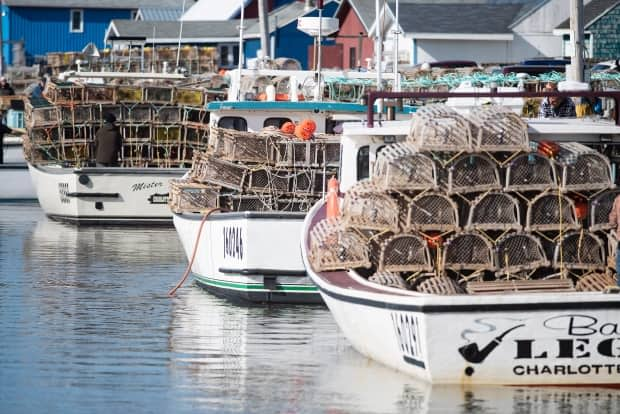
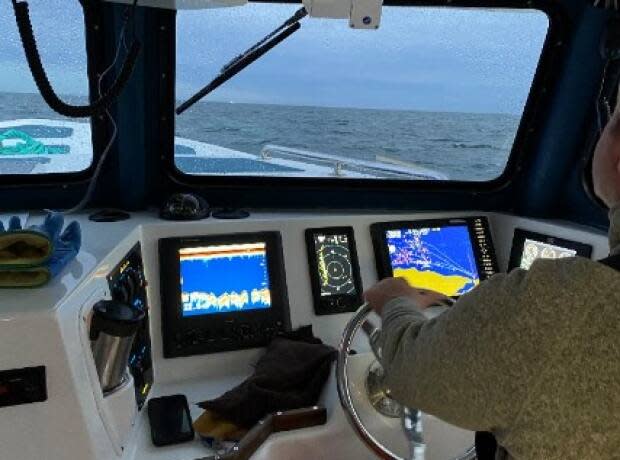
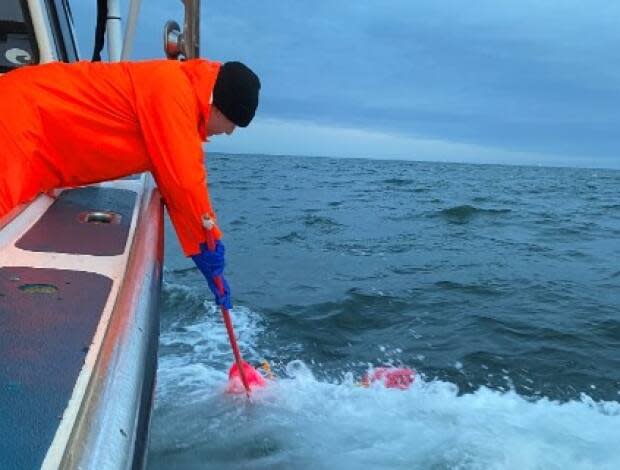
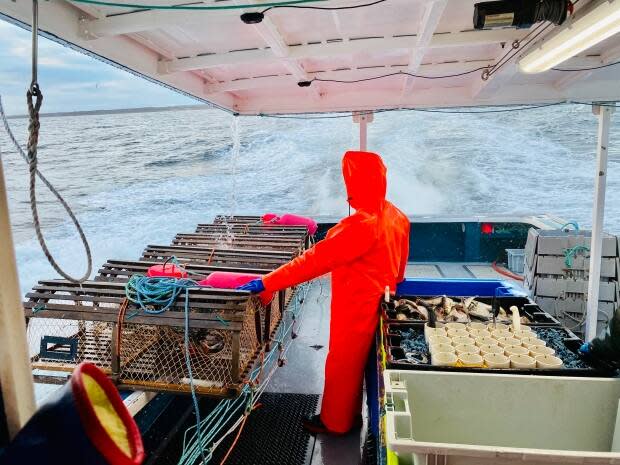
Fishermen know where to set their traps and pick them up the next day using a computerized plotter that maps the ocean, explained Yeo. Each boat, or licence, comes with its own area where its owner can set traps — it's a fishermen's agreement, she said.
"We fish Campbells Cove to the Naufrage line," Yeo said. "Where we fish, there's probably about 30 boats that fish the same ground. That's the ground we have to stay on throughout the year."
Sometimes there are disagreements over whose traps should go where, but Yeo said "we try to keep the peace." She said it's less of an issue in years like this in which catches are plentiful.
Some grounds are close to shore, and others can be offshore a couple of kilometres.
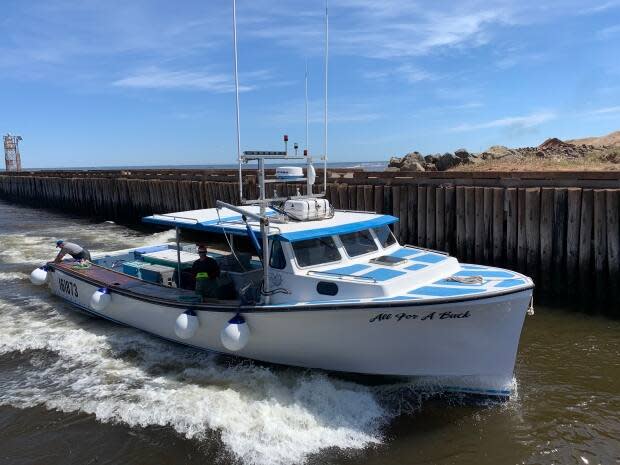
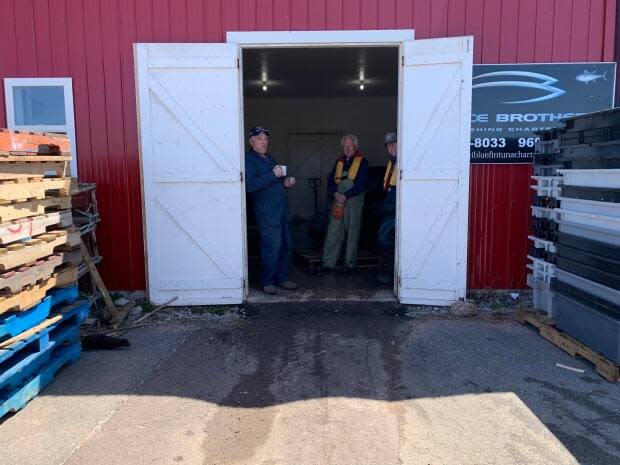
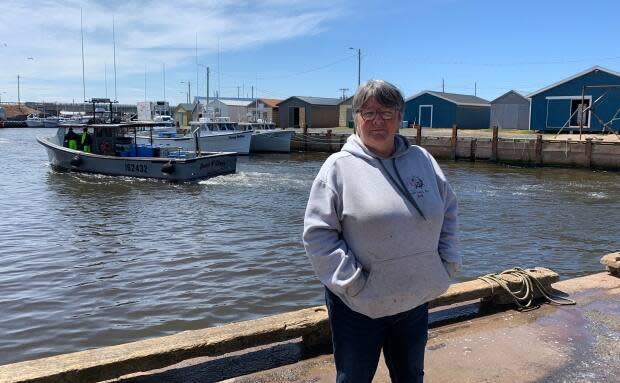
Each trap is attached to a rope, which is attached to another rope stringing together five or six traps, with a buoy on one end fishermen grab with a long hook to begin hauling.
Traps are hauled to the surface with a winch on the boat, and the lobsters are removed. Sometimes they'll band the lobster's claws with elastics, based on the buyer's preference.
Helpers will then add more bait to the traps — usually fresh or frozen herring, mackerel, silversides, blackbacks or redfish. Each fishermen has their preference.
Every day except Sunday
Fishers usually haul their traps every day except Sunday. Refraining from fishing Sundays is a fishermen's agreement across P.E.I., Yeo said.
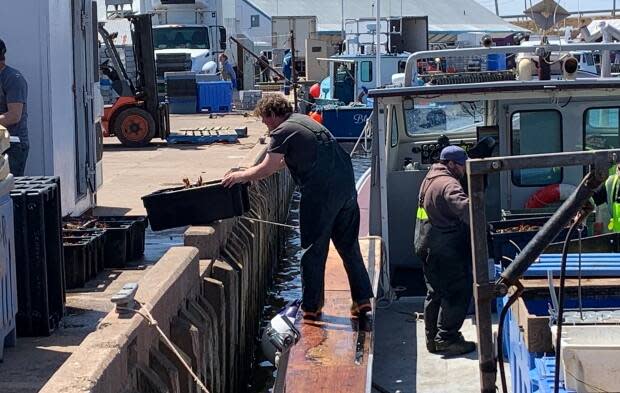
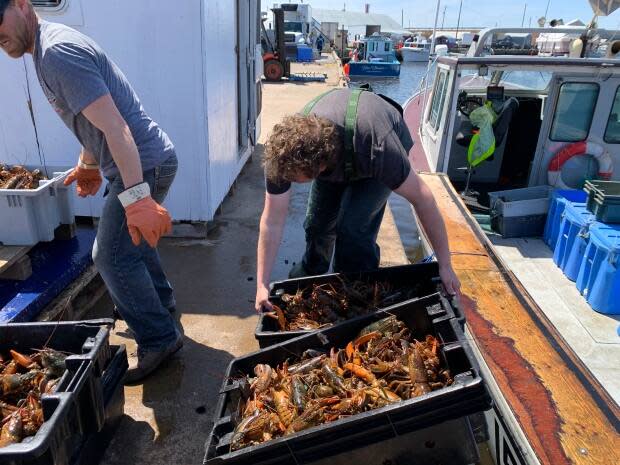
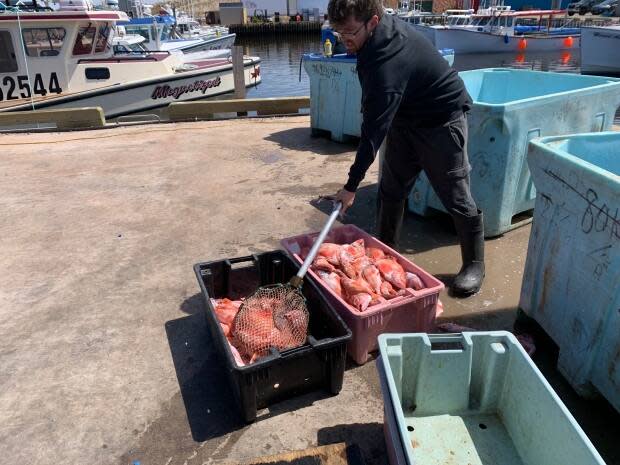
Some fishermen will even haul some traps at the end of setting day, which Yeo said is permitted.
The boats head out from port at dawn. They don't have to, but they do — Eastman believes it dates back to the days when fishermen also had to tend their own farms, so had to get the fishing done early.
She said the water is also calmer then — winds often pick up when the sun rises, she said.
What are 'canners' and 'markets'?
When helpers take the lobsters from the traps, they must measure them with a special tool.
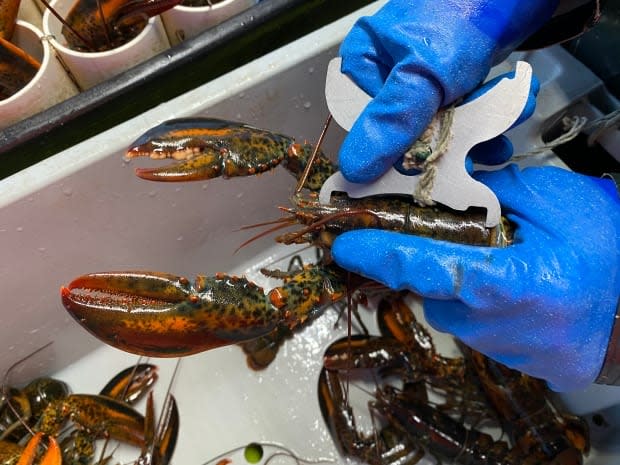


This year in this lobster fishing area, lobsters with a body size, or carapace, smaller than 74 millimetres, must be thrown back, as must any female lobsters that are "berried" with dark-coloured eggs on their undersides.
The smaller lobsters are known as "canners" because they are often sent to canneries, or processing plants. Lobsters over a certain size are referred to as "markets" because many of them are sold on the live market and are destined for whole lobster dinners in restaurants or at grocery stores.
Some people, like Eastman, say they prefer the sweeter taste and tenderness of the smaller lobsters.
Female lobsters, yum
Some people prefer to eat female lobsters that can contain rich red roe, or tiny eggs — like caviar.
Flip a lobster over onto its back — females will have softer, more feathery little fins along their tails than males. Females also have wider hips, Yeo said.
You won't know if it contains roe until you cook it and crack it open, though, so it can be a fun treasure hunt.
How is the price determined?
"Every year leading up to setting day, you definitely hear the rumours of a price — doesn't mean that's what we're going to get," said Yeo.
"Usually when we set, it's a good couple days before we know what we're getting, on our slips."

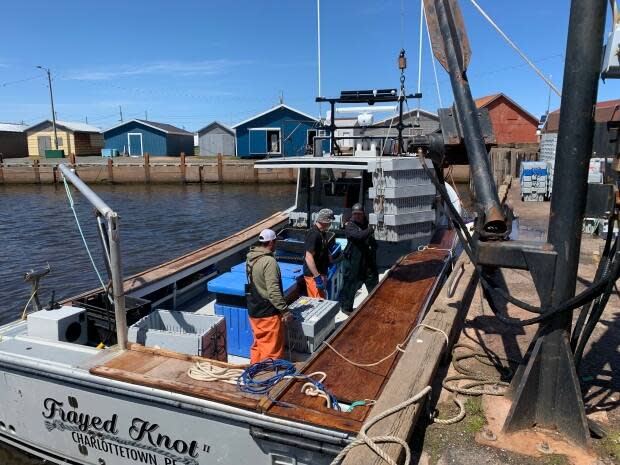
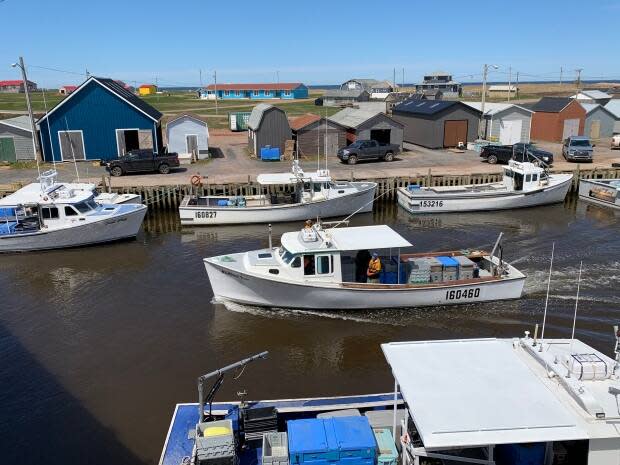
Price per pound can change daily, she said, and fishermen may switch who they sell to depending on who is paying more — they are not obligated.
"We like to stay with our same two buyers — we sell to North Lake [Fisheries] and Johnny Flynn," Yeo said. "But obviously ... you want to make the best bang for your buck, and buyers do understand that."
When CBC was on the wharf Tuesday, fishermen were talking about a dramatic $2 drop in the price most buyers were offering, around $8.50 a pound for canners and $9 for market-size lobster, down to $6.50 to $7 a pound.
"We didn't expect it to dive that far and that fast," said Eastman. "But it's been good, compared to last year."
In 2020 the COVID-19 pandemic depressed demand and prices for luxury foods like lobster.
Salaried crew
Most fishermen who captain their own boats will hire at least one helper, usually two, sometimes called a "cork."

Some helpers might get a share of the boat's profits, but in most cases it is just salary, Yeo said. On Let Her Go, her dad is the captain, her mother makes a percentage, and she and their other hired hand make a weekly salary.
Catches have been consistently extremely good in North Lake, she said — for instance the Yeos brought in 1,800 pounds of lobster Tuesday.
"It was a very good day," Yeo said. Catches usually drop off later in June as the end of the season nears, she said.
Just because catches are good this year "doesn't mean it's going to be a successful year next year, it can change at any moment," she added. Scientists continue to study lobster stocks and trapping habits, but much remains a mystery.
Fishers, or fishermen? What about women?
When she's calling fishermen on her radio, Eastman said she will say "calling all North Lake fishers," but uses both fishers and fishermen interchangeably. "It doesn't seem to matter."

"I personally don't think many females mind if they're called a fisherman, I personally don't mind," said Yeo. "But there definitely is some women out there, like my mother, that would like to be called a fisherwoman, for sure."
Once almost exclusively a man's trade, there are now more women coming into the fishing industry all the time, "which is great," said Yeo.
There are no female captains in North Lake yet, Eastman said, but there is one in the next harbour west, Naufrage.
Rising cost of gear, licences
Because fishing has been lucrative, not many fishers have been selling their licences. There is a finite number of licences, so new entrants must find someone to buy from, said Eastman.
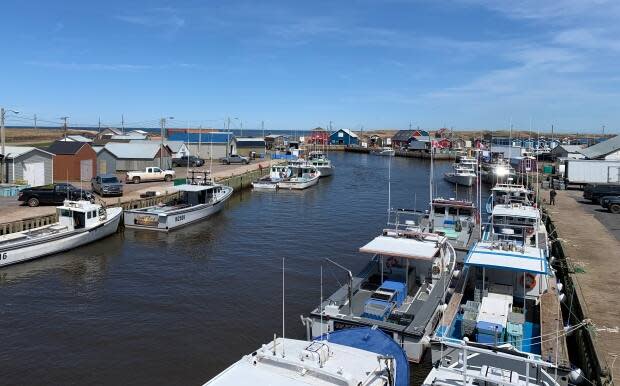
The price for a set of gear, a boat and a lobster fishing licence continues to reach new highs. One was sold recently in the area for $1.2 million, Yeo and Eastman said.
Yeo hopes to be a lobster captain herself someday.
More from CBC P.E.I.

